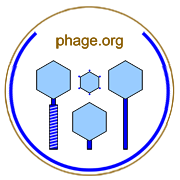

Reduction in expected burst size given coinfection by dissimilar phages.
The depressor effect is a consequence of different phage metabolisms, physiologies, and genes being mutually incompatible.
It is a legitimate question to ask whether individual infected cells will support mixed phage production verses burst-size depression to zero of only one of the coinfecting phages in some infected cells but not others, with the latter a process that more generally can be described as a mutual exclusion. The phage that by chance initiates its infection first and/or is more virulent may determine which outcome occurs, with the earlier infecting or more virulent phages dominating infections.
Mixtures of phages produced per individual infected bacterium, and perhaps lower depressor effects (that is, less burst-size depression), may be seen the more closely related the coinfecting phages.
The depressor effect can be a concern given the use of high-multiplicity phage-cocktail phage therapy. This may be less of a concern given active treatment (that is, starting with fewer phages) and also should be readily testable prior to in vivo or in situ trials via thorough phenotypic phage as well as cocktail characterization in the laboratory.
For references as well as additional discussion concerning the depressor effect, see Abedon (1994).
For more on this topic, see Wikipedia, Google, and PubMed. Contact web master. Return to terms.